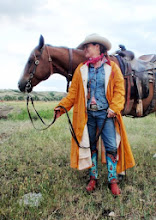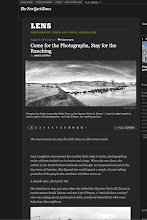Here is an excerpt from the book "True, Free Spirit Charles E Morris Cowboy Photographer of the Old West" by Bill Morris - Published by Advanced Litho Printing Great Fall, Montana ... "Born in Glendale (now Glenn Dale), Maryland, on June 29, 1876, Charlie was only seven when his mother Lily Jones Morris died. Soon thereafter, William Morris packed up son and belongings, headed for Virginia, and wandered between that state and the area around Rome, New York, while tending apple orchards. Little Charlie, often boarded out, learned very young in life to adjust to an assortment of people and environments. It was during these lonely early years that Charlie became an avid book reader. In time, his father remarried and relocated to Chattanooga, Tennessee.
After a baby was born into the family, Charlie's feelings of being unwanted intensified. As an escape from family conflicts, the impressionable youth immersed himself in books about the cowboy's life out West. He began to envision becoming a cowboy. Thus, in June of his fourteenth year, the 1980 school term having ended, Charlie Morris set out to make his own way in the world - to make his dream a reality.
He took with him a few dollars, a bag of salt, and his father's loaded six-shooter - no horse, no mule. He was afoot. As he trekked towards the West, riding empty railroad boxcars when possible, he lived off the country, existing on wild turkeys, squirrels, artichoke, watercress, berries, and whatever else he came across that he had read of as the impartial fare of the frontiersman. The country was bountiful, and he managed exceedingly well.
The youth began to follow the famous cattle trails, as described in books he had read, so, in time, found himself at the outskirts of Fort Worth, Texas. With almost the last of his money, he had been able to buy a good, well- broken cayuse, saddle, blanket, halter, and water bag. It being a cloudy day, he soon got lost in some hills but was able to shoot a squirrel with the ancient 32-20, now down to five cartridges. As he was feasting on the rodent, along came some friendly Indians who pointed the way north.
In a few days, he arrived out of Decatur, Texas, at the Coburn Ranch just as they were in need of a chore boy and flunky. This was the break he needed to rest and feed up his horse (and himself) and at the same time gather in a few dollars to buy the necessary items that a starting out "green" cowboy required. In time the youth was to acquire an older, but well-fitting saddle, boots, recycled spurs and bridle, a used 44-40 Winchester, a slicker and of course a Stetson.
It was not difficult in those days for a single cowhand to find work, except during winters. There was always the need of a willing hand, even if sometimes it was only splitting logs for beans and coffee, plus oats for his horse. So Charlie was employed that summer by the Ogallala Cattle Company as a green horse wrangler, a nighthawk, and began to learn rapidly, being a natural roper and cayuse handler.
As early fall rolled around, with a few extra dollars left after becoming fully equipped, he again headed northwest to Wyoming and 'undreamed of' adventures in that Territory..... When young Charlie joined the Bloom outfit as a 'jingler" (a wrangler), he discovered amazing country - country to a cowboy's liking. His job was to help herd thousands of cattle over hundreds of miles of prairie and across many rivers : from the Belle Fourche River in Wyoming, the Powder west into Montana, to the Yellowstone River, then north to the Missouri, and finally the Milk River in north central Montana.
....To his delight, Charlie found that here in Montana a cowboy could still ride all day and never see a fence. It was virgin country where buffalo grass still blew in the wind, and few plows had tasted the earth. Here was a graze enough for all, a land in which compatibility still existed for the most part between cowmen and sheep men - and it proved to be such dynamic exciting country that young Charlie longed for a way to capture it forever, for it was capturing his heart."
"Old timers recall with fondness and pride the work of Chas. E. Morris, whose pictures both accurately and artistically portray the two decades which bridge the nineteenth and twentieth centuries. My father knew as friends early cattlemen, sheepmen, and Indians of this part of the state. He photographed their herds at roundups, their land, and their families. In later years, friends spent many hours in his store reminiscing of their days on the range. Morris's photos graced the walls of their homes. Throughout the world, they mailed Morris's postcards of their West."
So glad I found this book and another great story behind the photographs.









